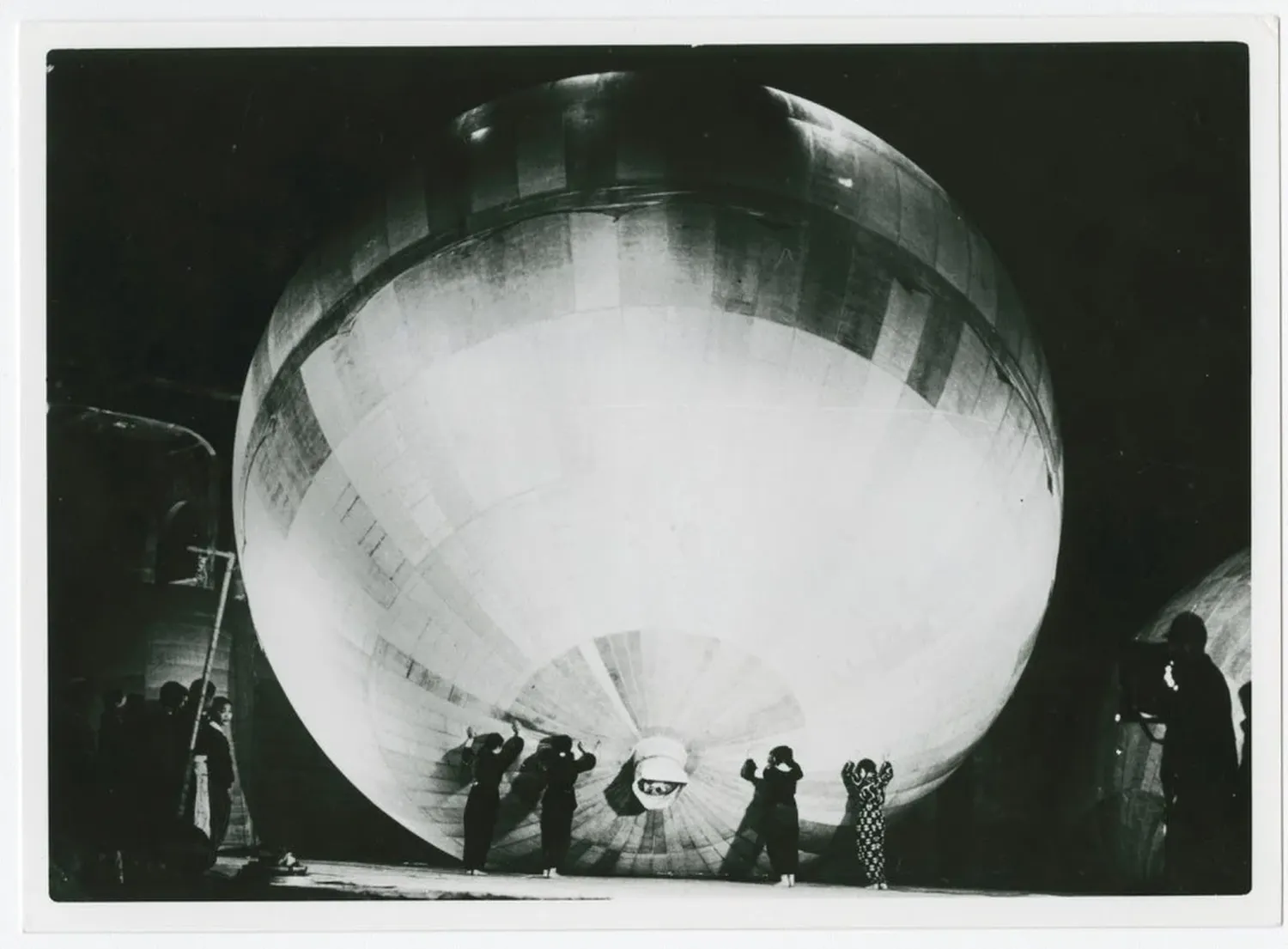During World War II, the Japanese developed the balloon bomb as a means of direct retaliation against the mainland United States. The balloons, made of paper or rubberized silk, carried anti-personnel and incendiary bombs.
The recent events concerning alleged Chinese spy balloons over North and South American territory have a first antecedent in Japan’s use, during WWII, of a similar method (and probably using the same air currents) to attack the US mainland from across the Pacific Ocean.

In the 1940s, the Japanese mapped air currents by launching balloons with measuring instruments from the western part of Japan and collecting them in the eastern part. The researchers observed that there is a strong current of air (known as a jet stream) crossing the Pacific at about 30,000 feet. These fast high altitude air currents would allow a balloon launched from Japan to reach the west coast of the U.S. in just a few days.
The first operational launches took place on November 3, 1944, and two days later a U.S. Navy patrol boat spotted a balloon floating in the water off the coast of California. Japan launched some 9,000 balloons over a period of five months, of which about a thousand would have made it all the way to their U.S. targets.
The helium-filled balloons were controlled by an elaborate mechanism that triggered a fuse when the craft descended in altitude, releasing a sandbag and lightening the weight enough for it to rise again. This process was repeated until only the bomb was left, by which time it should have been flying over the North American mainland.

The main objective of this attack – which aviation expert Robert C. Mikesh describes in his book Japan’s World War II Balloon Bomb Attacks on North America as the first successful intercontinental weapons, long before that concept was popularized by Cold War military jargon – was to unleash massive fires in the forests and fields of North America, in order to hinder its industrial war effort, and to strike at the collective psyche of society.
The manufacture of the balloons required not only advanced engineering knowledge, but an enormous logistical effort. Schoolgirls were recruited to work in the factories that produced the balloons, made from endless reams of paper and held together by a paste made from konnyaku, a potato-like vegetable. The girls worked long and exhausting shifts, and their contribution to this war project remained virtually silent.
A weapon of low effectiveness
The Japanese engineers and military expected that the impact of the weapons would be aggravated by forest fires, inflicting terror on the population, but the fact that most of the balloons could not complete the journey, and that those that did made it fell, in most cases, in remote and unpopulated areas, added to the fact that they arrived during the rainy season, hindered the fulfillment of the established objective.
Only about 285 incidents related to Japanese balloon bombs were reported. Most were recorded in the northwestern United States, but some balloons reached as far as Michigan.

As more sightings occurred, the U.S. government, with the cooperation of the media, adopted a policy of censorship and silencing, to reduce the chances of panic among American residents and to deny the Japanese any information about the success of the launches. Discouraged by the apparent failure of their efforts (in the absence of any reference in the American newspapers and radios), the Japanese stopped their balloon attacks in April 1945.
The Silenced Deaths
On May 5, 1945, in the small logging community of Bly, Oregon, a 26-year-old pregnant woman and five other children, while participating in a picnic organized by the local parish, stumbled upon an unexploded bomb in the woods from one of the many Japanese balloons that had made it across the Pacific.
Attempting to tamper with the device, unaware that it was a bomb, they set it off and it exploded, instantly killing Elsye Mitchell, 26, Eddie Engen, 13, Jay Gifford, 13, Sherman Shoemaker, 11, Dick Patzke, 14, and Joan «Sis» Patzke, 13. They were the only fatalities in the Japanese balloon attack on record.
In the aftermath of the explosion, the small logging community also had to bear the added burden of enforced silence. For the families of the deceased, the unique circumstances of their devastating loss would be shared by no one and known to very few.
Conclusions
While it is true that the balloon attack carried out by the Japanese during WWII required a lot of ingenuity and innovative thinking, it was still a desperate act to try to return, to some extent, the blows received by the fierce bombing raids on Japanese cities carried out by the US.
The limited payload that these devices could carry, coupled with their insurmountable lack of precision – a balloon without any kind of control or guidance system – as a method of delivery, demonstrates that the primary objective of the balloon bombers was to spread terror among the American people, and to boost their own morale.
The dependence on the capricious winds, some timely interceptions by U.S. fighters, and the censorship of the Government and the media on these events, ended up reducing to zero the effectiveness of this war action, which from the beginning, depended too much on the «luck» factor.
Sources: Smithsonian Museum Magazine (link); National Museum of the U.S. Air Force. (link)


Comentarios
Para comentar, debés estar registrado
Por favor, iniciá sesión